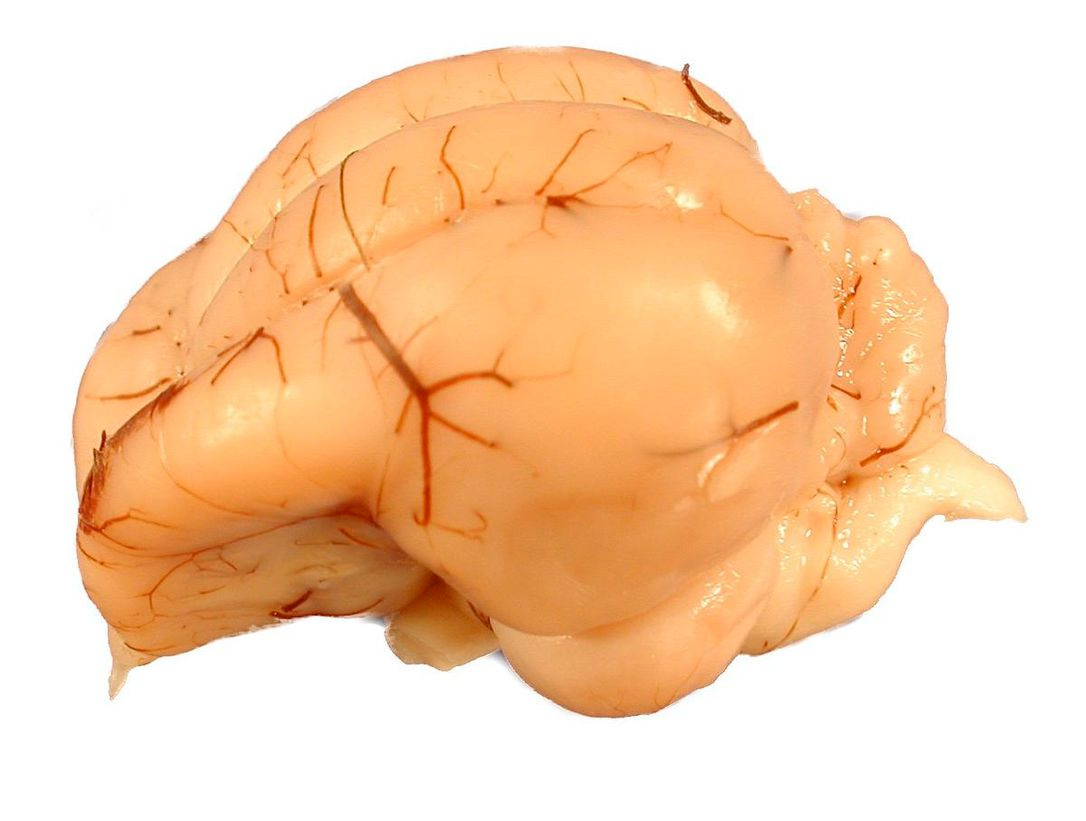Are Humans Really the Smartest Animals?
How humans hacked the scaling limits of intelligence
One of my favorite Wikipedia articles is “List of Animals by Number of Neurons”. The article actually consists of two lists - one of total neuron count and one specifically for forebrain neurons. It’s a neat list with lots of nice links to relevant papers.
Arguably the current best cross-species neurological metric for estimating intelligence is forebrain neuron count. If we scroll to the bottom of that list, we find the animals with the largest forebrains, clearly the smartest animals in the world. Humans are number 1, right?
Right?
Nope. There are four other species on the list that have us beat, though one (Risso’s Dolphin) is pretty close and seems to really be in the middle of a range of values humans can have. Orcas have over double human numbers.
One very notable absentee from the list is the Sperm Whale - the recordholder for the largest brain of any known animal, about 50% larger than that of an Orca. Not only do they have very large brains, but they also are known to communicate with a remarkably complex click-based language.
Granted, Orcas are also known to communicate, and while not as complex as Sperm whale language they are at least known to have dialects and to develop complex behavior such as elaborate hunting strategies, even group strategies, and even teach these strategies and behaviors to their children.
Sperm whales are known for similar feats, and both Sperm whales and Orcas are known for getting into arms races with humans. Orcas not only steal food from fisheries and fishnets but also actively evade attempts made to stop them. Sperm whales avoided early whalers by swimming upwind to get away from their sailboats (though this was much less effective once steamboats and torpedoes were invented). Sperm whales tend to spend most of their time in the deep ocean, so they’re not nearly as well-studied as Orcas.
Clearly, there is something special about humans that makes us uniquely successful and capable, but I hope I’ve gotten across well that the common notion that it is our intelligence alone seems questionable. Even the idea that it’s our language is up for debate at this point.
Bird Brains
A common insult I see thrown around the internet these days is “smooth brain”, as people have gotten the idea that intelligence is correlated with how wrinkled a brain is.
Birds such as crows and macaws are well-known to be incredibly intelligent animals, yet one look at their brain reveals that not only are they relatively tiny compared to human brains, but they are also very smooth! What’s going on here?
Mammalian brains concentrate the majority of their neurons in a thin, outer layer of the brain known as the neocortex. The neocortex itself is made up of layers, and the connectivity between these layers forms a specific circuit that shows up very consistently across the cortex. The reason such brains tend to be wrinkled is because, being a thin outer layer, neuron count scales with the surface area of the brain, not its volume, and adding more wrinkles is the best way to pack more surface area into the same amount of space.
While not exactly the same, there is a “canonical circuit” within the neocortex - essentially a simplified, primary circuit of these layers that seems to do the bulk of the work. While not exactly the same circuit, the avian brain seems to contain groups of neurons that connect into very similar circuits, though exactly how similar is still a subject of much debate.
What is less up for debate however is the physical organization of the components of these circuits. Whereas mammalian brains are organized into thin layers, avian brains are instead organized into large clusters or neurons, or nuclei. These nuclei together form the pallium (the functional equivalent of a neocortex in birds). This means maximizing neurons in birds is about maximizing volume, not surface area - thus why their brains are not wrinkled.
The vast majority of neurons in the mammalian cortex send dendrites or axons out to other layers, so we can assume that the number of neurons in a layer and the number of connections going in and out of that layer should be closely correlated - double the number of neurons in a layer, and the number of “wires” going in and out of that layer should double too.
However, geometrically, how exactly does that scale?
Assuming a lower limit to the thickness of axons and dendrites (the “wires” connecting these neurons), we would expect the limit on inbound and outbound connections to be correlated with the surface area of the nucleus. The number of connections we need to make however is proportional to neuron count, which is bounded by volume.
If we double the height, width, and length of a nucleus inside a bird brain, the neuron count (volume) grows by a factor of eight, but the surface area only grows by a factor of four. As we scale such a brain larger and larger, the density at which we must pack these interconnections would grow exponentially.
Compare this to the neocortex in mammals - the layers inside are of effectively constant thickness, and scaling is only done on area. Doubling the number of cortical neurons requires doubling the surface area of the brain, which happens to also double the amount of space for connections between layers. Not only that, but the layers are directly on top of each other, so the distance signals must travel between neurons in the cortical circuit is very short.
This leads me to a conclusion I’m surprised I haven’t seen others come to - mammalian brains are fundamentally, geometrically, more scalable than bird brains.
A Hyacinth Macaw has a whopping 2.9 billion forebrain neurons. This is about a seventh as many as a human, half as many as an elephant, and about on par with a baboon.
A crow has about 1.2 billion forebrain neurons, which is equal to that of a horse.
These birds can pack an astonishing number of neurons into a very small brain, but they seem to abruptly stop around 3 billion, whereas humans are around 20 billion, orcas 42 billion, and my best estimate for sperm whales (hard numbers haven’t yet shown up in any papers to my knowledge) is around 60-70 billion.
It’s not like crows and macaws are large birds either - look at ostriches (480 million, close to that of a racoon) or falcons (440 million). If this were purely a limit of the size of the animal, we might expect a few hyper-intelligent large birds, perhaps even some that beat us.
Plus, some of the smartest birds that exist can already speak and use tools. Imagine what they could do with brains 10 times bigger, assuming it were possible.
Encephalization Quotient
One old metric for cross-species intelligence is brain-body ratio, the technical term for which is Encephalization Quotient (EQ). Intuitively, this seems to make sense, as bigger animals have more nerve endings and thus need larger nervous systems.
This is somewhat true, which is why the forebrain metric focuses just on the forebrain, the part of the brain most involved in higher-level functions. A part of the brain more correlated with body size is the cerebellum, which is not counted as part of the forebrain.
It is also worth pointing out that a bigger body does not necessarily correlate with a more complex body, and in the cases where scale does bring additional complexity it’s often not proportionate. A real car may be 10,000 times larger than a toy RC car, but does it have 10,000 times as many steering wheels?
The complexity of controlling all the individual muscles of a big animal is mostly handled automatically by lower-level brain regions - cerebellum, spinal cord, etc., and the forebrain acts as the driver.
The scaling requirements for brains are information-theoretic, based on the number of possible unique states that those neurons can represent and store. C Elegans has either 959 or 1033 cells in its whole body (males have more than females), about 302 of which are neurons, making up about a third of their entire body. In terms of synapses, they have about 7500.
Memorizing a single word likely requires at least hundreds of synapses dedicated to just that one word, and even your typical monolingual human has memorized tens of thousands. This doesn’t even include all the numerous things beyond mere words that your typical human understands.
I find it hard to believe that the nematodes are on a path toward a technological civilization simply by virtue of their brain being a much higher percentage of their body than a human.
If we exclude microscopic animals however, the next group of animals with the highest EQs tend to be ants. Other eusocial insects such as bees, wasps, and termites also tend to have similar-sized brains. Their neuron counts are often in the hundreds of thousands or low millions, which is on the higher end for insects.
One way of explaining this is the social aspect - social animals tend to have larger brains to help track all their peers - however these insects don’t seem to be doing much of the kind of socializing that usually comes along with this, and tend to decide friend and foe with scent and other chemical markers. Instead, a more likely explanation is that these insects spend their brainpower on the other thing they’re well-known for; construction.
If we want to consider the difficulty of construction for an animal, once again we can turn to the square-cube law. Making an animal twice as tall, long, and wide increases its volume and mass by eight, and its surface area by four. Surface area and cross-sectional area tends to be correlated with how much stress an object can support before it breaks, and the strength of muscles scales similarly.
The same principle works both ways. If an object can only carry its own weight before breaking from the stress, an identical object half as tall, wide, and long will have a quarter as much area to spread weight across, but will only have an eight as much mass. Simply by making it smaller, you have now enabled it to carry twice its own weight.
It’s well-known that insects have incredible strength, being able to carry many times their own body weight with ease. This however is not a matter of some exceptionally strong muscles - sorry, but no amount of radioactive spider DNA could give you that kind of super-strength. Rather, this strength is purely a product of geometry.
Do You Even Lift?
Eusocial insects have an incredible ability to build complex structures vastly larger than an individual insect. Their brains definitely help with it, but humans attempting to build structures that much larger than a human will quickly run into the need for tools to make the job easier.
Tool development and use undoubtedly requires even more brain power than merely using the appendages nature gave you - you must understand how the world around you works in great enough detail that you can understand the abstract task at hand, imagine a physical process in the world that would accomplish it, design a tool that implements that process, build the tool using your hands, and then use your hands to use the tools to accomplish the task.
Then on top of that you also have to have the long-term planning ability to decide to go through this whole procedure in the first place. This whole process requires a vast number of variables, phenomena, and cause-and-effect chains to be tracked, predicted, and mentally navigated through. It requires a detailed and vast memory from which it can piece together inferences from past experiences, and an ability to project plans far into the future, store those plans, locate and remember its current position in a current plan, and improvise around unexpected obstacles.
From a purely information-theoretic perspective, tool use, especially for long-term plans, necessarily requires big brains.
From a thermodynamic perspective, big brains require a lot of energy, and thus require big bodies.
From a geometric perspective, a big body is less capable of manipulating its environment, and accomplishing large, complex tasks requires more tool use.
If we look at other animals with brains of similar scales to ours, we mostly find animals like whales, whose bodies are much larger than our own. There are no animals of a similar scale to our own with brains of similar size or complexity - the closest being chimps, orangutans, and gorillas, which have between a third and half as many cortical neurons as us.
Putting it All Together
Looking at all of this, I have a unique explanation for why we humans have such astonishing abilities. It goes something like this:
There is some approximate lower limit of brain power necessary to bootstrap a complex, tool-based society. This is not necessarily the lower limit to maintain it - for example a human can undergo a hemispherectomy, removing an entire half of their brain and rendering them equivalent to a gorilla in terms of forebrain neuron count, and still function perfectly fine in society. Ancient hunter-gatherer humans also had larger brains than modern humans, so there’s at least a remote possibility that we have since dipped below the bootstrapping threshold.
Complex tool use is necessary for metallurgy, transportation, industrialization, computers, spaceships, and all the many benefits and expanded capabilities that these things offer. Some degree of socialization is also of course necessary, for cooperation, (optimistically) peaceful coexistence, and the long-distance trade necessary to acquire that one exotic material you need to make your tool work. Or in the case of modern industry, a lot more than just one.
Beyond these simple social dynamics, communication is also necessary. Not just for coordination, but also for culture - rather than some genius’s best ideas dying with him, they can be communicated to others and passed down for generations. Peers and future generations can not just benefit from the greatest-of-all-time intellectual feats their species has accomplished, but can then iterate and build upon them to achieve feats that would have required vastly larger brains to have bootstrapped.
Over the course of tens or hundreds of thousands of years, this has the potential to compound dramatically, until the average individual has ideas their ancestors - even ancestors with larger brains - could never have possibly imagined or understood.
However, under normal situations a scaling barrier arises; a larger animal may be able to support a larger brain, but the difficulty of interacting with its environment grows faster than its brain can account for - an animal twice as big may need more than twice as much brain power to manipulate its environment equally well. A human can move some logs and build a human-sized hut with little more than their hands. An elephant couldn’t build an elephant-sized hut with its trunk even if it wanted to, and its large, imprecise, clumsy legs won’t make the task much easier.
In much the same way that mammals needed a more scalable brain to surpass the limits of bird intelligence, humans needed a more scalable approach to escape this tool-use barrier. We needed to support a bigger brain than our small bodies should have been able to support, getting the best of both worlds.
The invention of cooking is the obvious culprit here, as it allows for a form of pre-digestion to occur outside the body, killing pathogens, and making nutrients more easily accessible. I suspect that preservation of food through smoke, salt, and spices, likely was discovered early, allowing for food to be made more easily accessible.
While perhaps this is all just a round-about way of blaming fire for human progress, I think the perspective of all these scaling limits and finding different methods of bridging gaps between them provides a much more interesting story.
It also raises an odd question - where’s the next hard scaling wall on intelligence?
Thank you for reading this week’s article. I’ve had this one partially written for a few months at this point, and decided to finally put it out there. I might use some of the ideas discussed here as a basis for some future articles on AI. Not sure yet when those will come out, but they’re definitely on my list.







